Services
Our services
Subdivision
We are able to undertake all of your Subdivision requirements:
- Subdivision
- Unit Title Surveys
- Boundary Adjustments
- Easement Surveys
- Boundary Marking
We can guide you through the process or alternatively can manage the complete process on your behalf.
Topographical Surveys
Our team has the skills and equipment to undertake any scale of Topographical survey large or small.
Topographical surveys are detailed site surveys of surface features to produce in depth plans and contour information. This information is often used by architects and engineers for site analysis, monitoring and design. From roading, construction, mapping your farm or vineyard and providing levels on your steep Sound’s property we have you covered.
Engineering Set-Out
The team at Scope Surveying has extensive experience and knowledge in all forms of Engineering set-out. If its buildings, bridges, roads, or any form of construction where positioning is required, we can ensure an accurate, practical and efficient service.
Laser scanning and Tank Calibration
Laser scanners capture reality in a digital format. They use a non-contact laser to obtain millions of points per minute (known as a point cloud) and can be used to gather precise data of structures, buildings, or landscapes. It is an efficient way to obtain large amounts of data in a short period of time that is accurate to millimetres.
The point cloud can be used to create models for specific items such as beams, walls and pipes which can be used by designers and engineers.
Laser Scanners are also used in our Tank Calibration process. We have refined this process to provide an efficient and cost effective solution for Tank Calibrations. We provide accurate volumes for the whole tank in terms of any reference, be it a pressure sensor or dipping point. Download the Tank Calibration brochure here
Drone Surveying/Aerial Mapping
Drone surveying by photogrammetry involves flying a grid pattern over the site whilst taking overlapping photos. The software then uses pixel comparison to create a 3d model of the terrain. It can create a large complete aerial photo by “stitching” the overlapping photos into one.
For the best results, the ground cover needs to be minimal (exposed/hard surfaces or short grass).
Some examples where drone surveying is viable:
- Over large area's (with short ground cover) where traditional survey methods would take significantly longer.
- Exposed or hard surfaces such as roads
- Gravel piles or riverbeds
- As-builts/monthly volumes for civil contractors
- Dam as-builts
- Slope analysis

